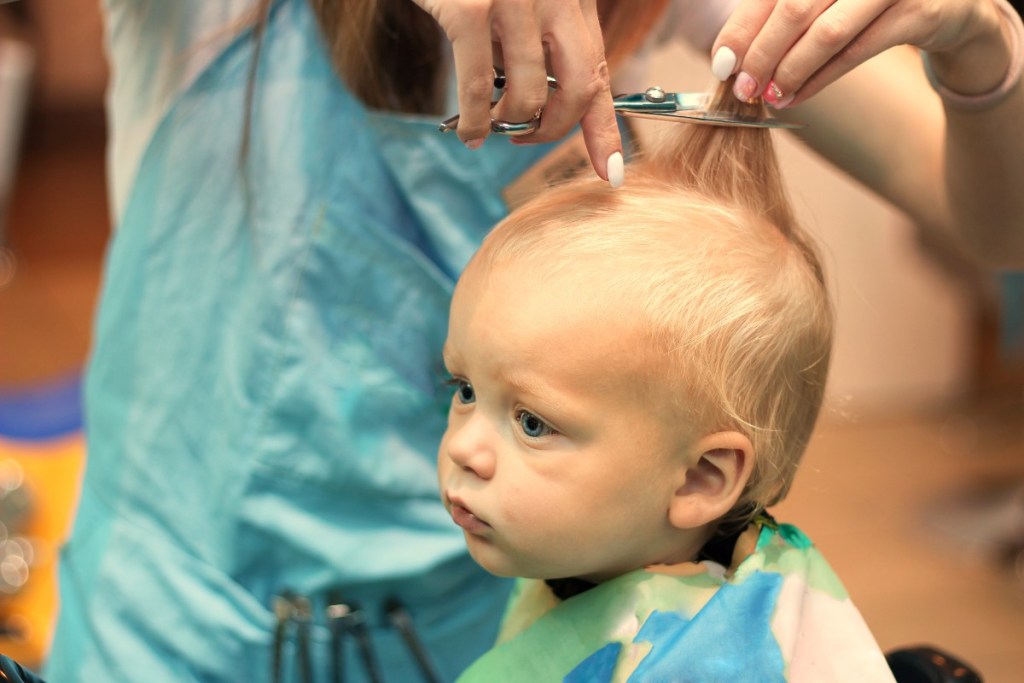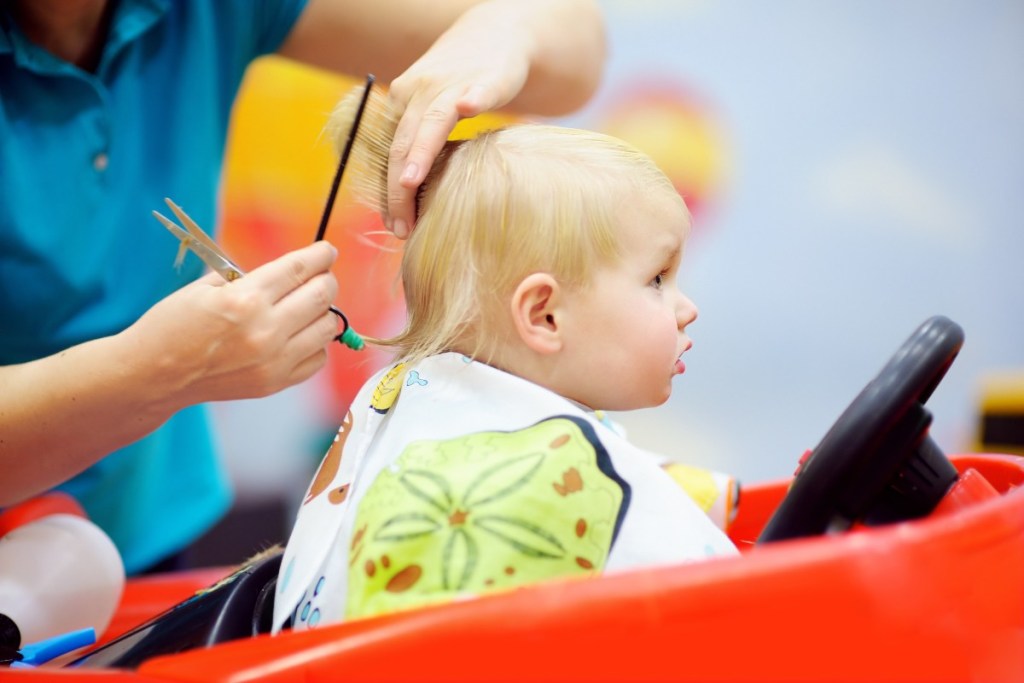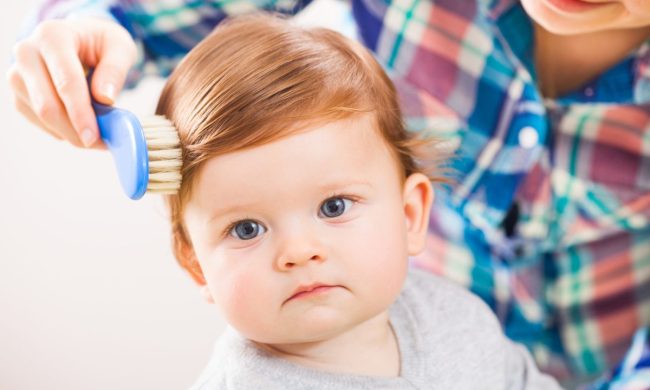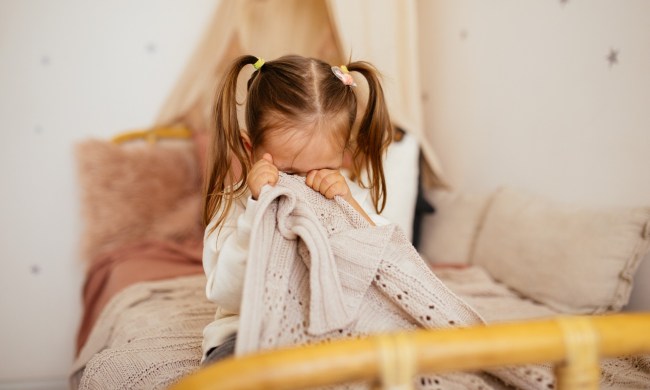It’s Baby’s first haircut — cue the tears (from you and your little one). No doubt, this is a big milestone and an exciting event, but it can also be incredibly stressful. Your babe might be amenable to the idea of a stranger trimming their hair — or they could be completely aghast. Either way, there are a few simple steps you can take to make this process as painless as possible. Want to ensure that you and your cutie-pie have a positive experience? Here are a few simple tips, tricks, and tactics to keep in mind.

Time the appointment wisely
That first trip to the baby salon can be exciting or jarring event for your little love. Unfortunately, you won’t know how your honey-bunny will react until you’re standing beside the stylist chair either giggling with them or diffusing a total tantrum. With this uncertainty in mind, try to do everything you can to help foster a happy, mellow mood. Make sure Baby’s tummy is full, and strategically time the appointment so that they are well-rested (no skipping that nap!).
A cranky baby is not going to cooperate when scissors approach their tiny face. A content baby, on the other hand, will be much more willing to go with the flow of this unfamiliar experience.
Go to a baby-friendly place
Sure, you could try to DIY your baby’s first trim, but, word to the wise, the bowl cut is strongly discouraged, and your styling skills are rather rudimentary. While there are haircare routines you should have with your child, what we’re trying to say is: Save this job for the professionals. They will know how to quickly and efficiently work shears around a small child’s face.
What’s more, your usual go-to stylist might do a bang-up job cutting your bangs, but they might not have the patience level or skill set to accommodate a toddler or manage a mid-snip meltdown. To this end, go to someone who specifically works with children.
And, know that most child-specific haircut destinations are designed with young kids in mind. They may feature fun “ride-on” salon chairs, boast built-in television sets at each station, or have toys for your wee one to enjoy during their appointment.
Embrace distraction
Screens are your friend. Hand over your phone to that toddler of yours. Put on a program. Embrace YouTube. Read a book. Sing songs. Do a tap dance if you must. Go through a whole staged routine of antics to ensure your kiddo remains happily engaged and entertained. The goal is to keep your little one calm, still, and smiling.
Avoid scary words
Adults know that haircuts aren’t painful. But a baby or toddler’s first hair cut experience can be intimidating. Those sharp scissors, fine-tooth combs, and sprays and lotions can look a little scary from the point of view of a tiny 2-year-old.
Communication is key to quelling these fears. Your baby understands more than you think — tell them what to expect and explain everything that will happen, but avoid a few trigger words. For example, a “cut” could sound alarming. Instead, go with “trim” or find a more creative alternative.

Offer creature comforts
If your baby takes a binky, be sure to keep it on hand; a pacifier will bring your little love comfort during this new and potentially uncomfortable situation. In this same vein, don’t skimp on the snacks.
Furthermore, remember that there is, indeed, a time and place for treats and — dare we say — bribes. One unifying parent truth: You’ve got to do what you’ve got to do. If things are going south during your baby’s first haircut, don’t be afraid to pull out all the stops. Offer a treat or surprise if you need to. A little celebratory cookie or toy trinket may take the edge off. Of course, you won’t want to use this tactic all the time, but an occasional bribe won’t spoil your little peanut.
Bring a change of clothing
Have an extra onesie or top handy in case your baby doesn’t want to wear the salon-provided robe or cape. (Yes, lots of littles irrationally freak over this seemingly minor detail.) At the end of the haircut, you can swap out your babe’s shirt so that they don’t have wet, trimmed hair down their back.
A few simple measures can help to ensure that your little one’s first hair cut is a success. But if you are too caught up in calming your cutie or micromanaging the stylist, you may neglect to celebrate this oh-so-exciting occasion — so be sure to enjoy it. Whatever you do, don’t forget to ask your sweetheart’s stylist to save a lock of hair for you to keep. Add it to your baby book so you can treasure this sweet memory and those adorable tiny curls. Good luck!
But, what if your toddler’s hair isn’t growing at the pace you wish it did? Read our tips to get inspired about what to do if your toddler’s hair is growing slowly.


